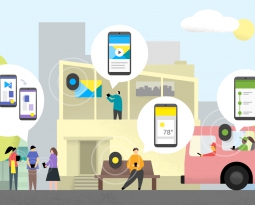2014 became a landmark transitional year for retailers. While few earth-shattering concepts or technologies debuted, many traditional and eCommerce brands saw earlier ideas crystallizing into reality.
The internet has finally entered its adolescent period, and businesses are recognizing how to cope in an all-digital sales environment. Trend pioneers like YouTubers and bloggers have paved the way for more marketable and sophisticated strategies that cater to an online audience while converting their interest into measurable sales.
2015 will see these trends advance even further as technology and tactics become more integrated than ever. Here are some of top tech trends we can expect to see in the rest of the year and on through 2016 and beyond.
Know Thy Customer
The Mad Men days of ad targeting via social stereotyping or broad grouping are all but dead. Instead, each customer can now be targeted for their individual tastes and sensibilities without offensively pigeon-holing them. This targeting is achieved through a robust mixture of data sources that all gets sent and processed to the biggest game changer in retail sales: analytics.
Analytics allow brands to determine new ways to reach customers and whether the old ways can be made more effective. Tech like loyalty programs, branded apps and beacons can be used recognize previous customers and engage them with offers and branded content that kindles their passion for quality products and services. Rather than trying to fuel demand, retailers are recognizing the inner desires of their customers and striking a spark of curiosity or passion to ignite purchasing actions.
Paying attention to and seeking out consumer needs in this way has reduced a lot of the shortfalls of legacy retail systems. Cost of inventory and stock shortages are both being reduced, and demand can be forecasted with greater accuracy than ever. Brands seeking this type of prescience are pulling from multiple data sources such as loyalty information and social media engagement to create predictions with almost eerie accuracy.
Content Now Outranks All, Becomes Sovereign Emperor
Home truth: most brands simply did not get how to use the internet until just a few short years ago. Since that time, they have taken cues from popular content and modeled their own endeavors after these success stories.
Now, branded content carries just as high of a prestige as the average internet personality or talking head. In fact, with the synergy of popular YouTube channels like Vsauce with mythical franchises like the Muppets, the line between creators and advertisers are becoming blurred.
Brands are able to use this content to build affinity and become seen as thought leaders on industry subjects. Other brands like Taco Bell are entering into entertainment territory with big-budget ultra-short film content that communicates branding messages while providing the qualities that lead to rampant viral sharing.
Content is already poised to usurp digital display as the most effective online means of capturing an audience and funneling conversions. Most brands are rapidly incorporating robust content campaigns into their budgets. Digital marketing in general is set to expand to at least 25% of most major brand’s total marketing budgets in this year, with room to grow by 2017.
Mobile as the Rule, Not the Exception
With Google now penalizing non-mobile or non-responsive sites, incorporating mobile into site design has become a crucial element of SEO.
Other advances like Starbuck’s tremendously successful use of Apple Pay have shown that mobile can smash through barriers that used to create friction between customers and goods providers. Many brands are seeking ways to take advantage of NFC technology and “friend pay” options to further entrench the relationship between customers and repeat purchases.
Other Tech Making Waves
There are many, many more developments coming down the pipes, but there is also plenty of existing tech that is just now seeing widespread implementation:
âSmarter POS Systems — POS development has long lagged behind advancements in other data and digital systems fields. New firmware and hardware is being created to effortlessly integrate loyalty functions while reducing wait times, often aided by cloud data banks to instantly update sales information on the fly.
âBeacons — Beacons can transform retail spaces into interactive digital playgrounds in much the same fashion as a web experience. Many retailers are implementing beacons in creative ways to make in-store shopping feel more personalized and dynamic.
âAugmented Reality — Brands like IKEA are branching out with augmented reality apps that help consumers envision their purchase while making more informed decisions. These applications are still rare, but their uses are growing in retail locations and on tech convention floors demonstrations.
All of these exciting advancements just create more opportunities for brands and customers to build stronger, longer-lasting relationships. Managing all of these components for an “omnichannel” effect has been shown to increase the effectiveness of all branded messages across the board.
Tools like Digital Social Retail’s customer messaging platform can control multiple functions like in-store display and social media posting from one convenient hub, all backed by powerful analytics to make better informed decisions than ever. Visit our product page to find out how our simple tool can push you to the cutting edge of retail advancement.










